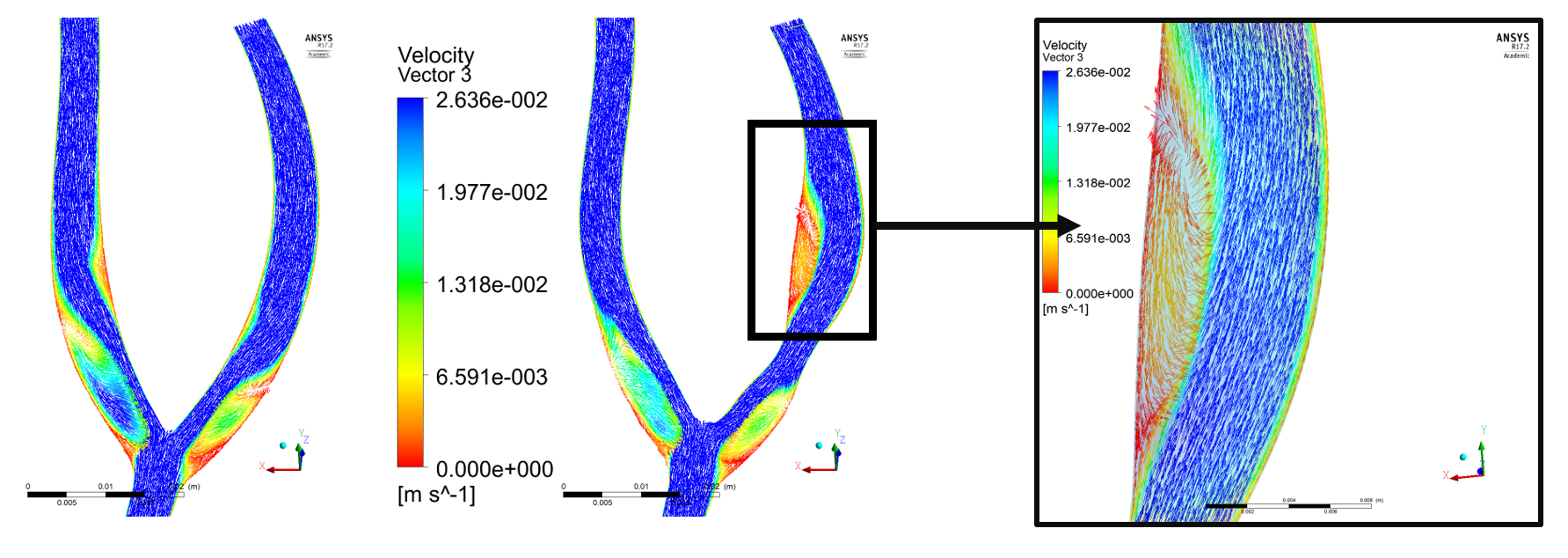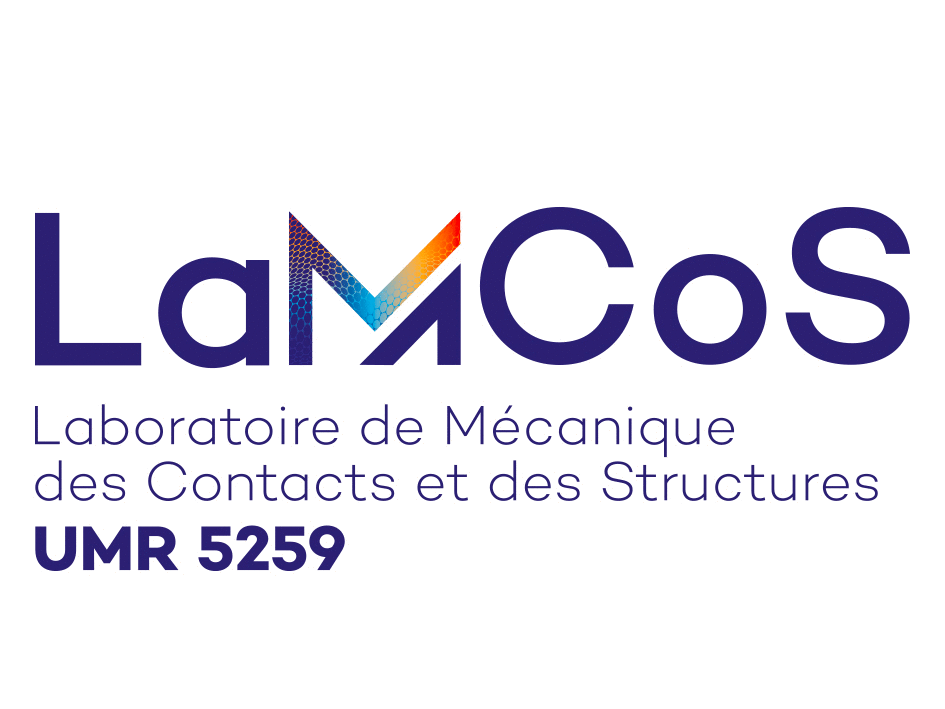Thematic Axis : Vascular diseases

Deformations of the vascular structure under the effect of inserted tools (M. Menut thesis)

Velocity vectors in a carotid artery in healthy and pathological cases
On the one hand, this theme concerns assistance with cardiovascular surgery, taking into account the biomechanical dimensions and haemodynamic analysis. Working closely with several clinical partners (HCL, CHU Rennes), the team is developing digital models of endovascular surgery, based on pre-operative medical images, for the treatment of aneurysms and stenoses. It is particularly interested in the interaction between navigation devices and the vascular structure. Model reduction methods are being put in place to facilitate the integration of the digital tools developed into routine clinical practice.
In addition, using haemodynamic analyses on specific patient models and 4D MRI data on blood flow, the team is developing methods for assessing the fragility of atherosclerotic plaque, in particular using acoustic methods.
Furthermore, with a view to limiting vascular complications, these analyses are complemented by analyses of microstructural disturbances in arterial tissue on a molecular scale, with a view to developing lipid-based therapies to limit plaque formation and restenosis. Certain lipids are known to have anti-inflammatory and anti-thrombotic properties, notably oxygenated metabolites of omega-3 polyunsaturated fatty acids.
These two approaches are intended to be combined to provide a more comprehensive analysis of the patient, taking into account his or her lipid nutritional history, in order to provide additional information to the practitioner prior to surgery, with a view to limiting post-operative complications.
In addition, using haemodynamic analyses on specific patient models and 4D MRI data on blood flow, the team is developing methods for assessing the fragility of atherosclerotic plaque, in particular using acoustic methods.
Furthermore, with a view to limiting vascular complications, these analyses are complemented by analyses of microstructural disturbances in arterial tissue on a molecular scale, with a view to developing lipid-based therapies to limit plaque formation and restenosis. Certain lipids are known to have anti-inflammatory and anti-thrombotic properties, notably oxygenated metabolites of omega-3 polyunsaturated fatty acids.
These two approaches are intended to be combined to provide a more comprehensive analysis of the patient, taking into account his or her lipid nutritional history, in order to provide additional information to the practitioner prior to surgery, with a view to limiting post-operative complications.
Contact : BOU-SAÏD Benyebka, BERNOUD-HUBAC Nathalie
